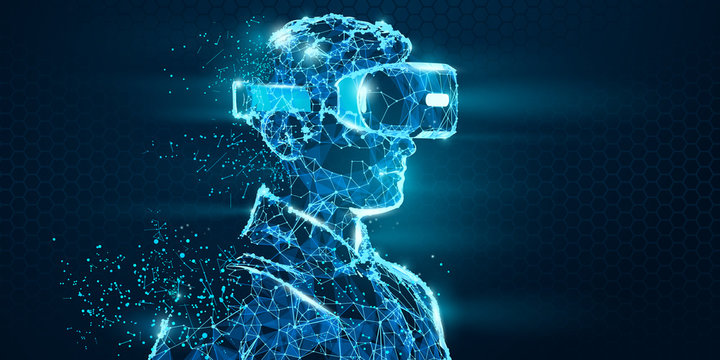Virtual Reality (VR) is a transformative technology that has catapulted the way we perceive and interact with the digital world. With the advent of sophisticated headsets and cutting-edge advancements, VR has transcended mere gaming applications to become a multifaceted tool with implications across various sectors. In this article, we will delve into the intricacies of virtual reality, exploring its impact on users, the evolution of headsets, and the diverse applications that have emerged.
Table of Contents
ToggleThe Evolution of Headsets From Pixels to Immersive Realities
Headsets serve as the gateway to the virtual realm, providing users with an immersive experience that blurs the line between the digital and physical worlds. Over the years, the technology behind headsets has undergone a remarkable evolution, transitioning from bulky, pixelated displays to sleek, high-resolution screens that mimic the nuances of reality.
Companies like Meta, formerly known as Facebook, have been at the forefront of this evolution. Meta’s Oculus series, including the Oculus Rift and Quest, has redefined the standards of virtual reality. The Oculus Rift, with its high-quality display and precise motion tracking, has set a benchmark for immersive gaming experiences. The wireless Oculus Quest, on the other hand, untethers users from their computers, allowing them to roam freely within their virtual environments.
Competing with Meta, HTC’s Vive series has also made significant strides in the VR domain. The HTC Vive Cosmos and Vive Pro boast impressive display resolutions and incorporate advanced motion-tracking technologies, providing users with an unparalleled sense of presence in virtual spaces.
Apple, a tech giant renowned for its innovation, has entered the VR arena with the Apple VR headset. While details about the device remain shrouded in secrecy, Apple’s foray into virtual reality is highly anticipated, promising to bring its trademark design and user experience to the immersive world of VR.
User Experience Beyond Gaming
While virtual reality initially gained traction as a gaming-centric technology, its applications have expanded far beyond the realm of entertainment. VR has emerged as a powerful tool for education, training, and simulations. Students can now embark on virtual field trips, exploring historical landmarks or delving into the depths of the ocean, all from the confines of their classrooms.
In the realm of professional training, VR has become indispensable. Industries such as healthcare, aviation, and military training utilize VR simulations to provide hands-on experience in a risk-free environment. Surgeons can practice complex procedures, pilots can hone their skills in realistic cockpit simulations, and soldiers can undergo virtual combat training, enhancing their preparedness for real-world scenarios.
Designing Immersive Environments
The design of virtual environments plays a pivotal role in enhancing the user experience. Developers and designers are tasked with creating worlds that are not only visually stunning but also intuitively navigable. The concept of presence, where users feel as though they truly exist within the virtual space, hinges on the seamless integration of design elements.
The use of realistic textures, spatial audio, and interactive elements contributes to the overall sense of immersion. Whether exploring fantastical landscapes in a gaming environment or participating in a virtual business meeting, the design choices influence the user’s perception of reality within the virtual realm.
Diverse Applications of Virtual Reality Technology
Virtual reality has transcended the confines of entertainment and gaming, finding applications in diverse fields. In the realm of healthcare, VR is being used for pain management, therapy, and even surgical planning. Patients undergoing painful procedures can immerse themselves in calming virtual environments, effectively reducing their perception of pain.
In the corporate sector, VR is revolutionizing the way meetings are conducted. Platforms like Spatial and AltspaceVR enable users to collaborate in virtual spaces, fostering a sense of presence even when physically separated. This shift towards virtual meetings has become particularly relevant in a world where remote work is increasingly prevalent.
The Role of Motion Controllers and Tracking Systems
The evolution of VR is not limited to headsets alone. Motion controllers and tracking systems have become integral components in enhancing user interaction within virtual environments. These devices allow users to engage with the virtual world in a more natural and intuitive manner, whether it’s wielding a virtual sword in a game or manipulating virtual objects in a professional setting.
Systems like the Valve Index and PlayStation VR incorporate advanced motion tracking, enabling precise detection of hand movements and gestures. This level of interaction further blurs the lines between reality and the virtual space, providing users with a heightened sense of agency within the digital realm.
Challenges and Future Developments
While virtual reality has come a long way, challenges persist. Issues such as motion sickness, the need for powerful hardware, and the high cost of quality headsets pose barriers to widespread adoption. However, ongoing developments in hardware, such as the quest for lighter and more comfortable headsets, and advancements in display technology are gradually mitigating these challenges.
Looking ahead, the concept of the metaverse is gaining prominence. Meta’s vision of a shared, persistent virtual space where users can seamlessly move between different applications and experiences represents a potential future for VR. The metaverse has the potential to revolutionize the way we socialize, work, and consume content in the digital realm.
Conclusion
Virtual reality has transcended its origins as a mere gaming technology to become a transformative force with far-reaching implications. As headsets evolve, user experiences become more immersive, and applications diversify, the boundaries between the real and virtual worlds continue to blur. From education and training to healthcare and beyond, VR is reshaping the way we perceive and interact with the digital realm. As technology continues to advance, the possibilities within the immersive world of virtual reality are boundless, promising a future where the line between reality and the virtual becomes increasingly indistinguishable.








